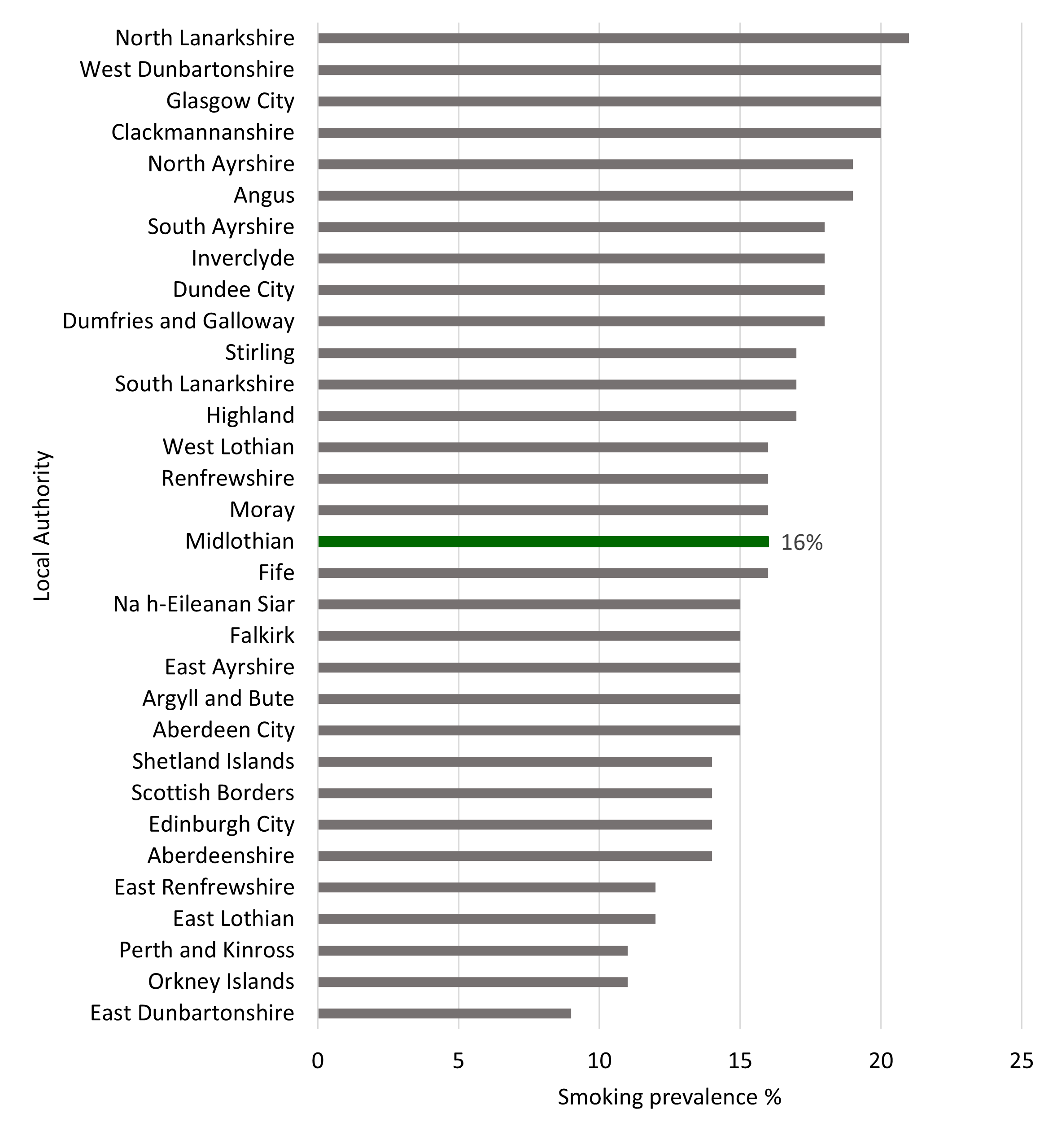Smoking
Smoking prevalence is the number of people who smoke tobacco in an area at a point in time.
Smoking prevalence for age 16+, by local authorities in Scotland (2017-2021)
Data Source: The Scottish Health Survey

Smoking status in Midlothian (2018-2022)
- 8% of people said they were smokers
- 29% of people said they used to smoke
- 64% of people said they have never smoked or used to smoke occasionally
Smoking in Pregnancy
12.6% of women smoke during pregnancy in Midlothian which is the same as the Scottish average of 12.6% from 2019/20-2020/21. Midlothian used to have a higher rate than Scotland, but this gap has now reduced. Note that there is evidence of under-reporting by women of their smoking behaviour at the booking appointment, but this issue is being addressed, and has improved in recent years. This may have influenced prevalence levels and therefore trend data.
Following the Scotland trend, the percentage of women smoking during pregnancy in Midlothian increases as the level of deprivation increases with the highest percentage in the most deprived category (26.5%). Those living in the most deprived areas are approximately 6 times more likely to smoke during pregnancy than those in the least deprived areas.
Additionally in 2019/20, significantly fewer pregnant women made a quit attempt in Lothian (4 week quit rate: 17.2%,12 week quit rate: 8.6%) with the help of NHS smoking cessation services compared with the Scottish average (4 week quit rate: 44.9%, 12 week quit rate: 32.8%).
Two of the main health implications of smoking are COPD and lung cancer. Over the last decade the COPD incidence rate per 100,000 in Midlothian has improved such that the Midlothian rate (153.29) in the combined three-year period of 2017/18 – 2019/20 is only slightly above the Scotland rate (168.06). The number of deaths from COPD in Midlothian for the three-year period 2017-2019 per 100,000 is not significantly different from the Scottish average (71.14 vs. 72.6, respectively) but it is important to note that Midlothian rates have been decreasing more over time since 2014-2016 whereas Scotland has been falling more gradually.
Page updated: June 2024
